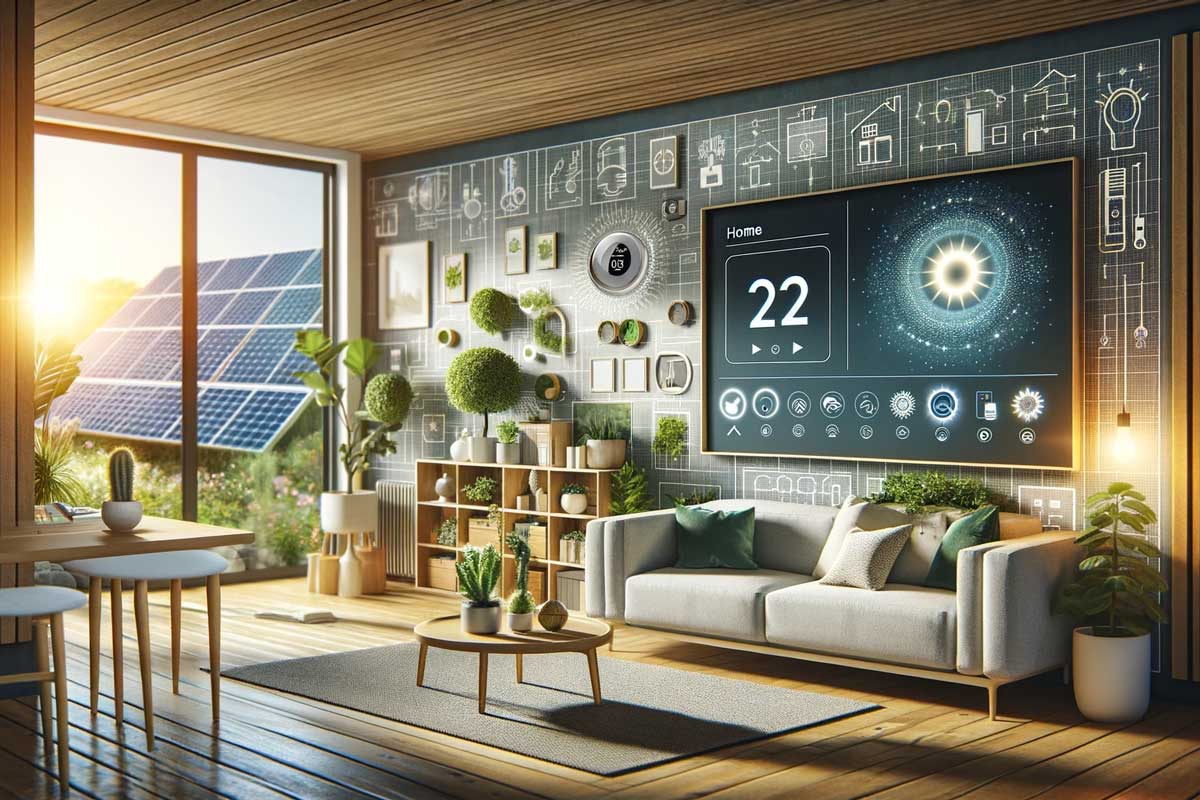
Future of Sustainable Home Automation: What's Next?
Share
The future of sustainable home automation is a topic that is capturing the imagination of tech professionals and enthusiasts worldwide. As we stand at the crossroads of technology and environmental consciousness, the integration of smart home solutions with eco-friendly practices promises to revolutionize our living spaces. But what exactly does this future hold, and how can we ensure it aligns with sustainability goals?
In recent years, the home automation industry has seen a significant shift towards sustainability. This shift is driven by a growing awareness of environmental issues and the need to reduce our carbon footprint. With the advent of new technologies and innovative solutions, the future of sustainable home automation is poised to transform the way we live, making our homes not only smarter but also greener.

The Rise of Green Technology in Home Automation
Green technology is at the core of this transformation. From energy-efficient appliances to smart thermostats, green technology is paving the way for more sustainable home automation solutions. According to a report by Greenly, integrating green technology into home automation is not only environmentally friendly but also cost-effective in the long run.
One of the key areas where green technology is making a significant impact is in energy management. Smart home systems are now capable of monitoring and optimizing energy usage, ensuring that homes are using energy efficiently and reducing waste. This not only helps to lower energy bills but also reduces the overall environmental impact.
Smart Energy Solutions
Smart energy solutions are at the forefront of sustainable home automation. These solutions leverage advanced technologies to optimize energy consumption and promote energy efficiency. For instance, smart meters and energy management systems can monitor energy usage in real-time, providing homeowners with valuable insights into their consumption patterns.
Moreover, the integration of renewable energy sources, such as solar panels and wind turbines, with smart home systems is becoming increasingly common. These systems can intelligently manage the energy generated from renewable sources, ensuring that it is used efficiently and effectively. This not only reduces reliance on non-renewable energy sources but also contributes to a more sustainable future.
Water Conservation and Management
Water conservation is another critical aspect of sustainable home automation. With water resources becoming increasingly scarce, it is essential to implement smart solutions that can help conserve and manage water effectively. According to a recent article on best practices for sustainable home automation, smart irrigation systems and leak detection technologies are playing a vital role in addressing this challenge.
Smart irrigation systems can adjust watering schedules based on weather conditions and soil moisture levels, ensuring that water is used efficiently. Similarly, leak detection systems can identify and alert homeowners to potential leaks, preventing water wastage and costly damage.
Advancements in Smart Lighting
Smart lighting is another area where sustainable home automation is making strides. Traditional lighting solutions are being replaced by energy-efficient LED bulbs and smart lighting systems that can be controlled remotely. These systems allow homeowners to adjust lighting levels based on their needs, reducing energy consumption and minimizing environmental impact.
Furthermore, smart lighting systems can be integrated with other smart home devices, such as motion sensors and smart assistants, to create a seamless and energy-efficient living environment. This integration allows for automated lighting schedules and personalized lighting experiences, enhancing both convenience and sustainability.
The Role of Artificial Intelligence
Artificial intelligence (AI) is playing an increasingly important role in the future of sustainable home automation. AI-powered systems can learn and adapt to homeowners' preferences, optimizing energy usage and enhancing overall efficiency. These systems can analyze data from various sources, such as weather forecasts and energy prices, to make informed decisions that benefit both the environment and the homeowner.
Moreover, AI can facilitate predictive maintenance, identifying potential issues before they become significant problems. This not only extends the lifespan of smart home devices but also reduces the need for frequent replacements, further contributing to sustainability.
Challenges and Opportunities
While the future of sustainable home automation holds immense promise, it is not without its challenges. One of the primary challenges is the need for widespread adoption and integration of these technologies. Many homeowners are still hesitant to invest in smart home solutions due to concerns about cost, complexity, and privacy.
However, as technologies continue to evolve and become more accessible, the opportunities for sustainable home automation are vast. By promoting awareness and education about the benefits of sustainable home automation, we can encourage more homeowners to embrace these solutions and contribute to a greener future.
For those interested in learning more about the latest innovations in sustainable home automation, Elemental Green offers a comprehensive guide to eco-friendly products that can enhance your smart home experience.

FAQ
What is sustainable home automation?
Sustainable home automation refers to the integration of smart home technologies with eco-friendly practices to create a more energy-efficient and environmentally conscious living environment.
How does smart lighting contribute to sustainability?
Smart lighting systems use energy-efficient bulbs and can be controlled remotely, allowing homeowners to reduce energy consumption and minimize environmental impact.
Can AI improve the efficiency of smart home systems?
Yes, AI can optimize energy usage, enhance efficiency, and facilitate predictive maintenance, contributing to a more sustainable smart home environment.
